Address:
- 2365 Hood Avenue, San Diego, CA, 92123
The best work boots for concrete are those offering robust support and exceptional cushioning. Durability and comfort are key for workers spending long hours on concrete.
Choosing the right work boots for concrete surfaces is essential for professionals in construction and industrial fields. High-quality boots provide the necessary support to reduce fatigue and the risk of injury associated with prolonged standing or walking on hard surfaces.
A good pair of work boots for concrete should feature thick soles, made from materials such as polyurethane or rubber, offering shock absorption and resilience. Proper arch support and a comfortable fit are also important to prevent foot strain and blisters. Some top brands design boots specifically with reinforced toe boxes to protect against compression and impact, which is a must for workers in hazardous environments. Remember that the boots should be sturdy yet flexible enough to allow for a full range of motion.
Working on concrete all day can take a toll on your feet. That’s why stepping into comfort with the right work boots is essential. The best work boots for concrete surfaces bring together durability, protection, and the all-important element of comfort. Whether you’re walking, standing, or moving across rough and unforgiving terrain, well-crafted boots are your first step to a pain-free workday.
When selecting boots for concrete work, certain features are non-negotiable. Ideal work boots should boast:
Comfort and support are crucial on hard surfaces like concrete because they reduce fatigue and the risk of injuries. Good boots:
Focus on comfort and support during long shifts to maintain not just foot health, but overall well-being.
Choosing work boots for concrete floors is a serious business. Your feet need the best protection. Good boots handle rough use. They don’t tear or break easily. What makes boots last? The material. Right materials mean boots stay strong for years. Read on to understand what keeps boots going long-term.
Leather is a classic. It’s tough. It shapes your foot. But it needs care. Weather can wear leather down. Regular treatment keeps leather strong. On the other hand, synthetic materials resist water and chemicals. They’re lighter. They often cost less. But some may wear out faster than leather. The choice depends on your job and the conditions you work in.
| Material Type | Pros | Cons |
|---|---|---|
| Leather |
|
|
| Synthetics |
|
|
How boots are made affects their life. Good construction equals longer-lasting boots. Sole attachment is key. Stitched soles are strong. They can be resoled. Glued soles are common. But they may not be as durable. Double stitching and reinforced heels add years. They handle wear better. Choose boots built for tough jobs. Your feet will thank you. Check for these:
Walking on concrete challenges your feet. Choosing the right work boots is crucial. They must be comfortable. They must also protect. Let’s explore the essential safety features for anyone braving concrete surfaces and day in, and day out.
Steel-toe work boots offer sturdy protection. They shield feet from falling objects. Composite toe boots are lighter. They are great for metal-free work areas. Both options meet safety standards. Choose based on job requirements and personal preference.
| Feature | Steel Toe | Composite Toe |
|---|---|---|
| Weight | Heavier | Lighter |
| Metal Free | No | Yes |
| Safety Standard | Meets | Meets |
Outsoles that resist slips are a must. Concrete can be slippery when wet. These outsoles grip firmly. This keeps you upright and safe. Always check the tread pattern. It determines the grip quality.
The Role of Insoles in Concrete Work Boots is crucial for those who spend hours standing on hard surfaces. Proper insole support can mean the difference between comfort and pain in your workday. Let’s dive into how insoles affect your overall foot health and functionality on the job.
Investing in custom insoles can enhance comfort and support. In contrast, factory insoles might need to be replaced for better performance.
| Insole Material | Properties | Benefits |
|---|---|---|
| Gel | Shock absorbent, cushioning | Reduces foot fatigue |
| Foam | Soft, conforms to foot | Improves comfort, good for all-day use |
| Rubber | Durable, resistant | Long-lasting, offers stable support |
The right insole material helps prevent foot problems. Gel insoles cushion against concrete. Foam insoles mold to your feet for comfort. Rubber insoles hold up to heavy use.
Selecting the best insole material impacts your foot health. Consider your work conditions and foot needs when choosing insoles.
Working on concrete surfaces demands robust footwear. These surfaces are tough on boots. Selecting the right pair ensures comfort throughout the day. Weathering the elements requires boots suitable for all conditions. This article unfolds the essential features needed in work boots for concrete workers who face various weather challenges.
Persistent moisture can damage boots and affect comfort. A good pair of boots comes with waterproof membranes that seal out water efficiently. Here’s what matters:
Quality waterproofing ensures dry feet in wet environments, crucial for productivity and health.
Extreme temperatures demand boots that offer insulation and breathability. Insulation keeps feet warm in the cold, while breathability wicks away moisture to prevent overheating.
| Insulation | Thermal linings maintain warmth. |
| Breathability | Mesh linings allow airflow to cool feet. |
Boots with dual technology cater to both summer and winter work conditions.

Credit: www.youtube.com
Walking on concrete demands footwear that provides exceptional balance and stability. The right outsoles ensure safety and comfort during long hours of work. Let’s dive into the elements that contribute to effective outsole design and superb traction.
Tread Patterns for Enhanced Stability
The design of tread patterns plays a critical role in stabilizing each step.
Work boots with these tread designs can turn hazardous surfaces into solid footing, ensuring peace of mind and firm steps on the job.
Outsole Materials for Maximum Grip
The material of the outsole is equally vital for grip on concrete surfaces.
| Material | Properties |
|---|---|
| Rubber | Durable, slip-resistant, and flexible in cold temperatures. |
| TPU (Thermoplastic Polyurethane) | Resistant to oils, chemicals, and abrasion. |
| EVA (Ethylene-Vinyl Acetate) | Light, cushioning, and provides good shock absorption. |
Select boots with outsoles made from materials designed for superior grip. Boots with such outsoles will keep you upright and moving with ease, no matter the challenges of the concrete below.
When your job has you standing on concrete all day, choosing the right boot size is key. Comfort, protection, and longevity hinge on a proper fit. The right boot size ensures every concrete conqueror ends their day with healthy feet. Let’s dive into how to find that ideal boot size.
Wearing boots that don’t fit can harm your feet. Blisters, bunions, and arch pain can slow you down. Long-term effects include joint issues and back pain. Proper sizing avoids these problems, keeping your feet healthy.
Follow these steps to measure your foot with accuracy:
Measure both feet as one may be larger than the other. Always fit the larger foot.
Pro Tip: Measure your feet at the end of the day. Feet swell throughout the day, so this provides the size they’ll be when you wear your boots.
Add more rows as necessary
| Quick Size Guide | |
|---|---|
| US Men’s Size 9 | 10.25 inches (26 cm) |
| US Men’s Size 10 | 10.5 inches (27 cm) |
Remember, the right work boot fit does not end with length. Width matters, too. Many brands offer wide and extra-wide options.
Try boots on with your work socks. This ensures the fit accounts for the added material. Walk around to confirm a comfortable fit.
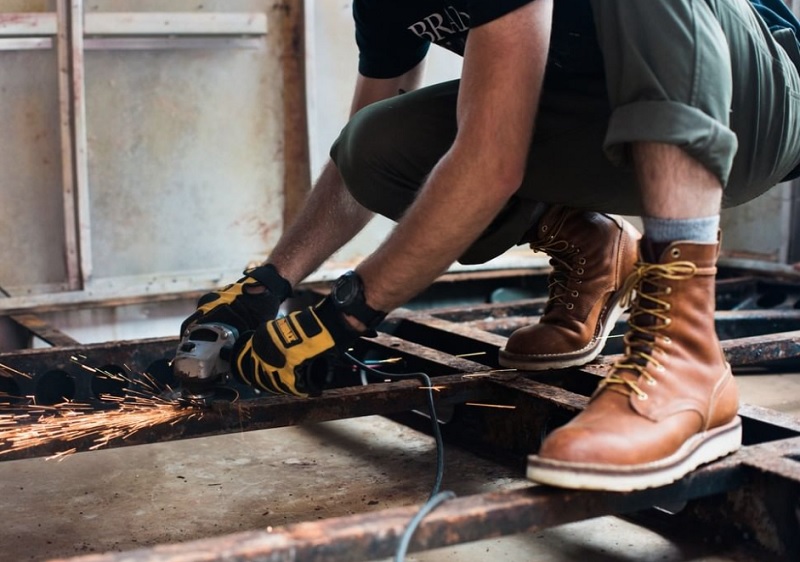
Credit: nicksboots.com
Choosing the right work boots for concrete surfaces is crucial. Quality boots mean more than just comfort. Let’s dive into how investing in a pair pays back over time.
Top-tier work boots bring long-term savings. Here’s how:
A cost comparison over time shows high-quality boots are a better investment. Consider this:
| Boot Type | Initial Cost | Average Lifespan | Cost per Year |
|---|---|---|---|
| Cheap Boots | $50 | 1 year | $50 |
| Quality Boots | $150 | 4 years | $37.50 |
The right investment upfront leads to notable savings down the line.
Finding a balance is key. Affordability shouldn’t mean sacrificing quality. Here’s what to look for:
Remember, good boots protect more than your feet. They ensure safety, prevent lost time, and save money in healthcare costs. Weigh initial costs against potential risks and long-term expenses for the best choice.
When it comes to comfort and durability on hard surfaces like concrete, certain brands stand out. These top brands combine innovation and user feedback to craft the ultimate work boots for those who spend hours on concrete floors.
Leading brands in the work boot industry know that unique features make a big difference. Durable materials, shock-absorbent soles, and supportive insoles are just the beginning. High-quality boots also boast water resistance, enhanced traction, and ergonomic designs for maximum comfort. Brands like Red Wing, Timberland PRO, and Caterpillar consistently innovate to meet the specific needs of concrete workers.
| Brand | Key Feature | User Rating |
|---|---|---|
| Red Wing | Puncture-resistant soles | 4.5/5 |
| Timberland PRO | Anti-fatigue technology | 4.7/5 |
| Caterpillar | Steel toe protection | 4.6/5 |
Real-world testimonials speak volumes about the performance of work boots on concrete. Customers often praise boots that offer all-day comfort and foot protection. Popular review platforms show high satisfaction levels for boots from Keen, Wolverine, and Carhartt. These brands earn top marks for reducing foot fatigue and providing reliable support.

Credit: thorogoodusa.com
To ensure your work boots last longer, proper maintenance is key. Whether you’re trudging through concrete or simply wearing your boots on-site, they require regular care. A simple routine can keep your boots tough against the harsh concrete environment. In this section, we’ll guide you on cleaning techniques for dust and stains, as well as the right storage habits for your work boots.
Concrete dust can settle into your boots, leading to wear and tear. To tackle this, follow these steps:
Storing your boots properly can prolong their life. Use these best practices:
Regular checks for damage and timely repairs are also beneficial. By following these tips, your work boots will be ready to step back onto concrete with ease.
The best work boot for concrete is one with cushioned insoles and durable arch support to alleviate foot strain. Recommended brands include Timberland PRO, Wolverine, and Red Wing, known for comfort and long-lasting wear on hard surfaces.
The most comfortable boots for standing all day include Timberland PRO Men’s 6″ Pit Boss Steel Toe, Caterpillar Men’s Second Shift Steel Toe Work Boot, and Wolverine Men’s Overpass 6″ Composite Toe Waterproof Work Boot. These offer superior support and cushioning.
Steel toe boots are essential for concrete work to protect feet from heavy falling objects and compression injuries. They provide crucial safety on construction sites.
Rubber soles with thick cushioning and deep grooves offer the best durability and comfort on concrete surfaces. They provide excellent traction and help reduce foot fatigue from extended wear on hard surfaces.
Selecting the right work boots for concrete surfaces is essential for your comfort and safety. Durability, support, and proper cushioning are key factors to consider. Remember, a wise investment in high-quality boots can prevent fatigue and injury. Choose wisely to ensure your feet stay protected during those long hours on hard surfaces.
Get our most valuable tips right inside your inbox, once per month!

DM work boots offer durable protection and comfort for demanding work environments. These boots are designed to withstand rugged conditions while providing support for long
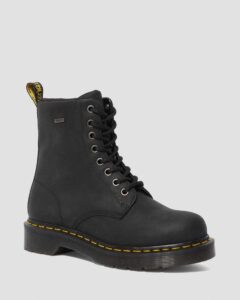
Doc Martens are waterproof due to their high-quality leather construction and durable design. These iconic boots are known for their ability to withstand the elements
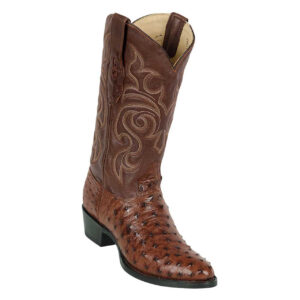
Caiman boots are luxury footwear made from the hide of caimans. These boots are known for their distinctive texture and durability. Crafted from the
The Astro Boy boots are rubber footwear created by the Brooklyn art collective MSCHF, popularly known as the Big Red Boots due to their resemblance
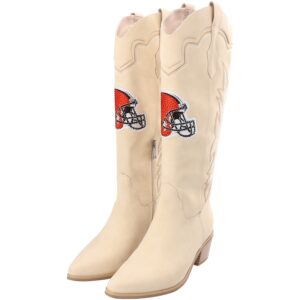
Ostrich boots are high-end footwear crafted from ostrich leather, prized for its distinctive quill patterns. These boots combine durability with luxurious texture and style.
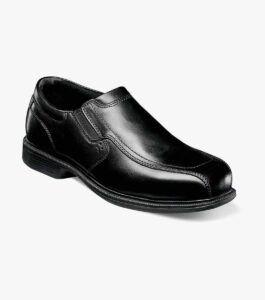
Leather slip-on work shoes are a convenient and practical choice for workers who need an easy-to-wear and comfortable shoe option. These shoes are designed to
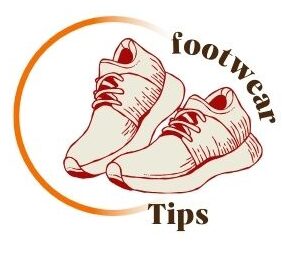
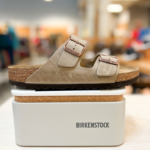


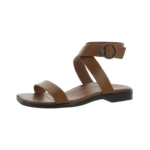
One comment
[…] Work boots need to be tough. Look for heavy-duty construction and slip-resistant soles. They have to stand up to mud, water, and rough terrain. […]